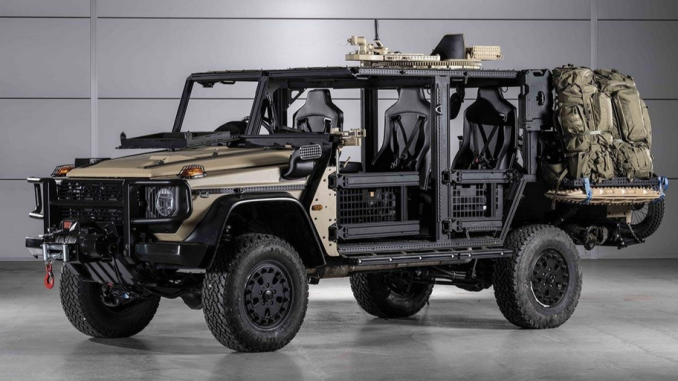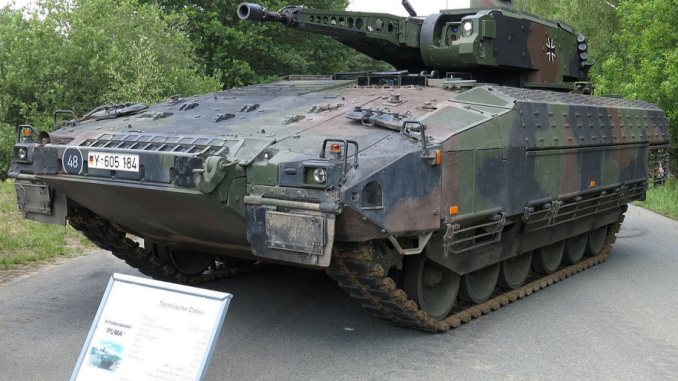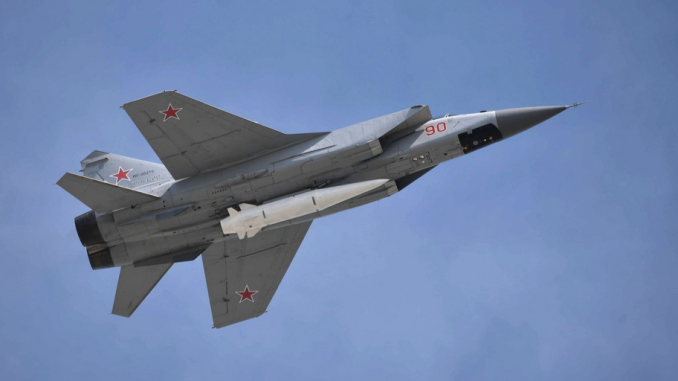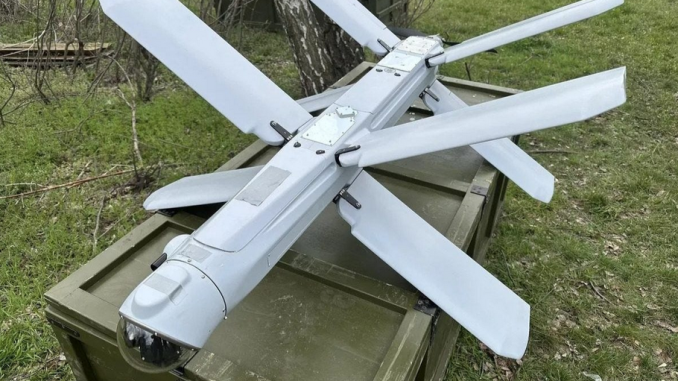Peloni: US foreign policy has been on the wrong foot for the past more than 20yrs, and the eventuality of a world power lacking the means to defend itself or its allies is the sad consequence of such military misadventures as Iraq, Libya and Serbia…and of course Ukraine. Indeed, instead of making Russia an ally, the US placed the world on a path of war, even as the US knowingly lacked the means to quench the many fires which were anticipated to arise as a result of this war policy. While impossibly expensive war systems have been made in small quantities in the West, the Russians have pursued a policy of thrift, producing far less expensive hardware at scale. The result of this insanity is that as the Russians have now been placed on the defensive, with their home territory invaded by a grifting US proxy in Ukraine, all of NATO now sits on the precipice of reality in which each NATO member state is anxiously awaiting to see if Russia might act with more or less civility towards them than they, the democratic powers of the world, acted towards Russia. In fact, Putin is not isolated from his people in recognizing the war hungry strategy which dominated the West since the Russians de-Sovietized themselves, as the Russian people are well aware of the Russian animus which has fed the bipartisan pro-war parties all across NATO. This insanity will either end with the adoption of a pan-European security apparatus which includes Russia, or it will end very badly for all sides. And all the while, China is benefiting from every day and every dollar spent in the West to push and keep Russia within the Chinese sphere of influence. Such utter folly.
Stephen Bryen | Weapons & Strategy |Oct 23, 2024
 Caracal Air Assault Vehicle
Caracal Air Assault Vehicle
The German Kiel Institute has published a disturbing, but accurate report on German and European defense. The report suggests that the overall picture for Germany, Europe and the United States, is grim. The bottom line is that despite all the NATO war talk, NATO (including the United States) is not ready for any conflict with Russia. It also suggests that the pricing of defense equipment is making defense companies rich, but not helping the overall cause of security.
The Kiel Institute was founded in 1914 and is regarded as Germany’s leading influential think tank. In September, the Institute produced a study called “Fit for war in decades: Europe’s and Germany’s slow rearmament vis a vis Russia.” The study is very important: it points out how unprepared Germany and other European countries are should Russia attack them. It tells a sad tale about how overpriced and insufficient is European, specifically German, defense manufacturing.
A great example is a German Air Assault vehicle called Caracal. A Caracal is a kind of wild cat found in Africa, Pakistan, the Middle East, and parts of India. The German vehicle, which is an unarmored gussied-up jeep based on a Mercedes G class chassis, was put together by Rheinmetall, Mercedes-Benz AG and ACS Armored Car Systems GmbH.
The Caracal has no armor on its sides (which are open). A little more than 3,000 of these vehicles were provided to Ukraine at a cost of € 1.9 billion, which works out to a unit price of €620,000. You could bolt an antitank gun or machine gun on a 4 wheel drive commercial jeep for less than $35,000 per copy. (And since Ukraine has no airlift capability, an air assault vehicle dropped onto the battlefield is a non-starter.) The Euro is currently valued compared to the dollar at $1.08.
An equally appalling example is 30mm ammunition for the German Puma. The Puma is an infantry fighting vehicle. The Puma costs a staggering $5.3 million each! But get this, the 30mm ammunition for the Puma comes to around €1,000 per shot! Puma can fire up to 600 rounds per minute. That compares to a US 30mm High Explosive Dual Purpose round (more specialized than a run of the mill bullet) at $100. So German 30mm ammunition is ten times more expensive than from the US.
 PUMA IFV, first Series
PUMA IFV, first Series
The German army also is buying tactical military headsets for soldiers. Commercially available tactical headsets are available on a retail basis for $299. If you add features such as noise cancellation, the price may go up to $400, not more. But the German headsets cost a whopping € 2700!
The bottom line is that people are making a lot of money supplying European armies or sending stuff to Ukraine. Some might say it is outright corruption, since governments are unwilling, perhaps complicit, in these deals. Mind that the Kiel Institute only goes as far as saying these purchases are uber-expensive, no more.
The Kiel report has a lot to say about defense industrial output in Russia (which is a lot), by the fact that the Russians are not going to run out of weapons anytime soon, and that supplies are now augmented by North Korea in the form of artillery rounds and missiles. North Korea, it seems, has been grinding out weapons well in excess of anything it can use, and until now it did not export. The Russian deal with North Korea sustains the Kim dictatorship, of course, by providing cash (or the equivalent) and underwriting jobs.
All of this helps explain, in part, that Germany’s investments in defense are corrupted (I think that is the right word) by excessively expensive hardware. Even if Germany actually meets the NATO target of 2.1% of GDP for defense, what the German army ends up getting is extremely overpriced, not to mention that a lot of it is ending up in Ukraine and only slowly, if at all, replaced on the home front.
Even with adequate spending, what money is spent on boggles the mind. Very little, for example, is going into air defense, something that is vital for future defense needs.
Overall, NATO-supplied air defenses have done a mediocre to extremely poor job in Ukraine, a harbinger of a deadly future in Europe unless the problem is corrected.
Larry Johnson pointed out to me an intriguing footnote (page 25) in the report, set in ultra-small type and easily ignored. The footnote discusses Ukraine’s ability to shoot down Russian missiles and drones. “Sample interception rates for commonly used Russian missiles in 2024: 50% for the older Kalibr subsonic cruise missiles, 22% for modern subsonic cruise missiles (e.g. Kh-69), 4% for modern ballistic missiles (e.g. Iskander-M), 0.6% for S-300/400 supersonic long-range SAM, and 0.55% for the Kh-22 supersonic anti-ship missile. Data on interception rates of hypersonic missiles is scarce: Ukraine claims a 25% interception rate for hypersonic Kinzhal and Zircon missiles, but Ukrainian sources also indicate such interceptions require salvo firing all 32 launchers in a US-style Patriot battery to have any chance to shoot down a single hypersonic missile. By comparison, German Patriot batteries have 16 launchers, and Germany has 72 launchers in total.”
Take note that interceptor missiles for Patriot are in ultra short supply. These missiles take a long time to manufacture, and gearing up to make them has proven challenging. There is a shortage of critical components, also bolloxing production lines. While Lockheed Martin is the main producer, Boeing provides key parts for the seeker the missile uses to strike its target (when it works). Boeing won’t solve that problem, at the earliest, until 2027. Meanwhile Boeing faces a massive industrial strike and an internal crisis far from a solution.
But there are big questions about air defenses. The US has sold Patriot and other systems to Ukraine. The Russians spend a lot of effort destroying them, but even when they function their intercept rate is below par. Europe has supplied IRIS-T, NSAMS and other systems that, so far as can be determined, are roughly equivalent to Patriot. On the whole Israeli systems are better, but they are not deployed in Ukraine. What is regarded as the top US system for air defense, AEGIS (in the form of AEGIS Ashore), is not in Ukraine. The systems are in Poland and Romania.
Europe has very little in the way of home-deployed air defense (Britain essentially has none). The US is not much better off. Some system, especially the Ground Based Mid-Course Interceptor (based in Alaska) is a mixed bag, and the Pentagon is now looking for new interceptor missiles that work better than what they have. Despite a lot of tests that were optimized to try and assure success, the forty of so missiles in inventory only work about half the time.
And the future is also concerning as hypersonic weapons arrive on the battlefield, as already they have in Ukraine in the form of Kinzhal and Zircon. Systems like Patriot or Iris-T or any of the other NATO air defense systems hardly stand a chance against hypersonic attack missiles.
 Kh-47M2 Kinzhal. 2018 Moscow Victory Day Parades
Kh-47M2 Kinzhal. 2018 Moscow Victory Day Parades
The picture also isn’t pretty when it comes to drones, which are being fired off by the thousands by the Ukrainians and Russians. They are hard to kill, and systems like the Russian Lancet drone can destroy modern battle tanks and infantry fighting vehicles. No one so far, including Israel, has come up with an efficient way to destroy swarms of drones, or even some lesser attacks that get through.
 Russian Lancet Drone
Russian Lancet Drone
Above all the Kiel report puts a new and important perspective on Europe’s security situation and, by extension, the US as it is pledged by treaty to help defend Europe. Instead of constantly expanding NATO and creating angst in Europe and Russia, it is time to step back and see if a credible defense of Europe is possible. Right now, the answer is, it cannot.



Peloni,
I’m not enamored with the idea of “acting with civility” towards Israel’s deadly enemies, such as Russia.
As for the German military-industrial complex, it appears to be complicit with the Biden-Harris crime cartel — which is de facto complicit with the above.
…a case of “good crook/ bad crook”
@Raphael
Thank you for your kind words.
Regarding the title, I agree with your challenge on the need of an active defense in Europe today. Yet, Europe has placed themselves in a confrontational position with regards to Russia, even if they were simply pantomiming what the American’s required of them. In fact, the Europeans have a long history of instability, being the center of two world wars and the dividing line of the Cold War which ultimately spread across the entire globe as well. So it is not so inappropriate for Europe to covet some sense of trepidation while a pan-European security arrangement is not forthcoming. Truthfully, recalling the adage that good fences make good neighbors, we should be reminded that this would be true for nations as well, but with nations, the fences are represented by national defense assets, which Europe and America have run short.
Notably, while Russia still has hopes of securing such an arrangement in the aftermath of the current insanity, it should be recalled that the deep animus which has been made plain by the West for all things Russian could hardly have been wasted on the Russian people. Furthermore, the very real attempt by NATO to shatter the Russian economy alongside the very real butchery which came from a refusal of NATO to negotiate a fair resolution before that butchery came about, will not be soon forgotten by the Russian people. Also, the generation in Russia today which is most intimately associated with the consequences of these details are in fact the youth of today, which means as time passes, the bitter resentments will more likely increase rather than dissipate. And it should be noted that not only is Putin the most liberal leader which Russia has ever known, but he remains the least hostile with regards to rhetorical gestures towards Western duplicities. So, as time passes, two things will come to be reflected in Russia which are contrary to European security. The first is that Putin will be replaced, most certainly with a version of himself which will be far more hostile to the West, and the general attitude of the Russian people will become far more inimical towards the West as today’s youth become the tomorrow’s voting public. So, while Russia is determined to have a security arrangement which includes Russia, so as to prevent continued Western encroachment eastward, it would be quite important for the future of Western security to achieve the same end to deal with the coming generational storm which they have fairly brought upon themselves from the Russian people/state.
There was a real opportunity to achieve a prolonged peace in Europe after the bloodless end of the Cold War, but the US made short shrift of that. Personally, I would argue that we are in a much less stable situation today in the wake of this recent needless Slavic slaughter than thirty years ago, just as I suspect we will soon be even more unstable as Europe’s de-industrialization persists and Russia’s power and inner stability increases. Which is why it is best for everyone, all sides and the future peace, that a pan-European security arrangement which includes Russia should be established as soon as possible. The fly in the soup, of course, is America, which will insist upon a seat at the head of the table, and this will be true with or without a Trump victory.
Also, do recall that Europe’s future will need to wrestle not only with the consequences this recent butcher’s bill for the Slavs, but also with the injection of the Muslim ideology all across the continent, sans Russia and Hungary. So I would argue that Europe needs significant guardrails to stabilize the peace, and I hope we do not have a redo of the aftermath of 1991 instead.
One more point to raise, regarding your thought provoking comment is in regards to this:
If you look closely, you will see that Europe is not unified but rather they are economically captured in an organization which has had nations such as Germany dominating the interests of nations such as Italy, since the so called European Union was first formed. Indeed, it should be recognized that the EU is notoriously no more representative of the will of the people of Europe than the UN is representative of the people of the world. The resulting friction from this fact, interlaced with the coming de-industrialization of Germany in specific, and Europe in general, will lead to a power shift and possible destabilizing of this faux union to the point of possibly destabilizing it…perhaps. In any event, the economic shifts in eastern and central Europe will have its own impact on security needs of Europe which might be addressed by a Russian-European remedy if the Americans would allow it, which of course remains somewhat dubious, IMO in any event.
@Peloni Your prologue is spot on…even better than spot on. But the article’s title says,
My question is, WHY does Europe need to be “defended” at all? I see no ideological threat to Europe, like Communism or Nazism. (Actually, there is one…Islam…but Europe has decided to embrace that one.) The phrase “defending Europe” makes it sound like they are a helpless little kid in the school yard, that needs protection from some big bully that wants to steal their lunch. I don’t think that’s an accurate picture. Europe, which is now largely unified, could certainly defend itself, if it wanted to. They have the money, the industrial base, and the people, necessary to do it. So why don’t they? I guess it’s just easier to let the US do it. They seem to want to do it anyway. All this has got to change. The world is a mess and nothing will improve until there is a paradigm shift. Will it come as a result of rational decision-making or as a result of a major crisis? I hope for the former, but expect the latter.